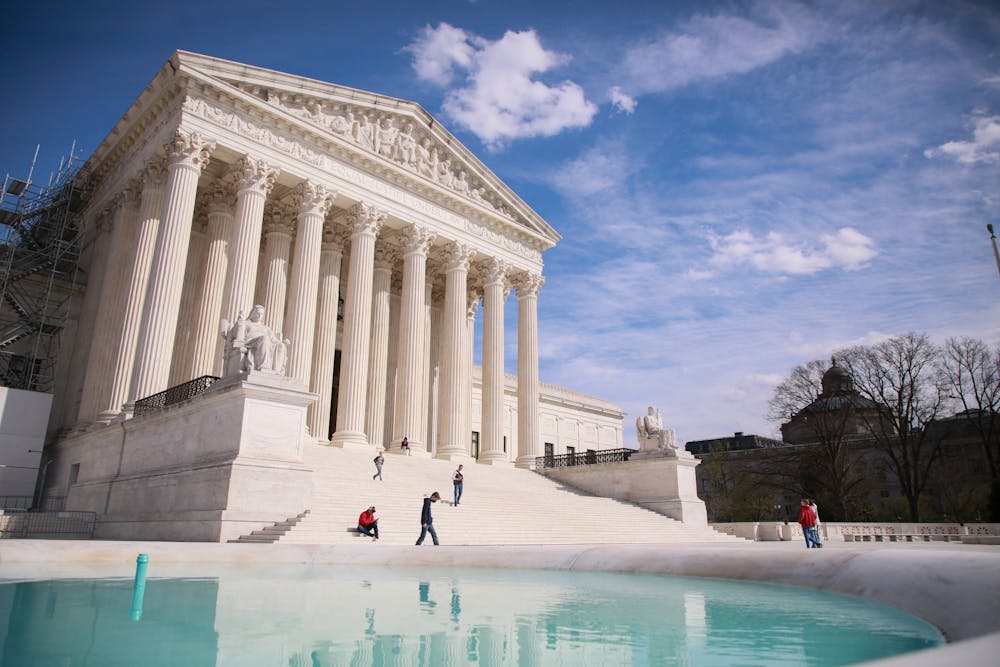“He only got in because of affirmative action.” “There was no way I was going to be admitted. People who look like me don’t benefit from affirmative action!”
We’re all familiar with the way affirmative action has been invoked as a dismissal for a student’s acceptance to an Ivy League school, or a flippant excuse to explain away a rejection. Nevertheless, the mysterious and complicated policy underpinning uncomfortable college conversations has reached its final days. June’s Supreme Court decision in Students for Fair Admissions v. Harvard prohibited the continued consideration of race in college admissions. Though this practice has been in place since the civil rights movement, it has faced scrutiny given the Fourteenth Amendment’s textual prohibition on racial discrimination.
The decision has been met with exhaustive cries from activists and college admissions offices, mourning the death of what they see as a pivotal racial justice policy. Despite this outrage, racial preferences in admissions have been standard practice at universities, without being required to legitimatize their efficacy.
In reality, affirmative action is arbitrary and lacks defined goals. The court acknowledged this in the 2003 Grutter v. Bollinger decision, holding that the University of Michigan Law School was permitted a “narrowly tailored use of race in admissions decisions.” This, however, was with the caveat that the policy “further a compelling interest in obtaining the educational benefits that flow from a diverse student body.”
At face value, this seems to be reasonable. Diversity is, of course, a facet of any good liberal arts education — it is one of the things that attracted me to Penn, after all. But what does it mean to have substantive diversity? Is increasing the ratio of people who identify as different races sufficient? Or should universities consider underrepresented socioeconomic, ethnic, geographic, religious, and ideological backgrounds preferentially in their quest to cultivate an environment of people with different perspectives derived from lived experiences?
If diversity truly is an end in and of itself, as the admissions data that universities tout in their brochures suggest, we need to be critical of the limited diversity that affirmative action offers, and expand this definition of diversity to consider more factors holistically. Some racial justice advocates are also critical of affirmative action as a tool for additional educational enrichment on the grounds that it instrumentalizes minority students to improve white students’ education. Both of these critiques make me question how effective the affirmative action approach is at fostering comprehensive and authentic diversity on college campuses.
This brings us to the second and more commonplace understanding of affirmative action as a rectification for past injustices. The ACLU defines the aims of affirmative action as “address[ing] racial discrimination by recognizing and responding to the structural barriers that have denied underrepresented students access to higher education.” This seems most consistent with the origins of the term “affirmative action,” which empowers the government to act affirmatively to correct unfairness.
Defining the practice this way begs the question: Are universities implementing affirmative action to serve the needs of the community and society at large? If they are truly seeking to respond to historical inequity, the goal of race-based consideration in university admissions logically should be to repair past injustices or to improve socioeconomic mobility for these groups.
SEE MORE FROM LEXI BOCCUZZI:
Abandoning the dean’s list is a move towards devaluing merit at Penn
The former goal, to repair past injustices, seems most consistent with calls for racial reparations by certain activists. However, the sweeping policy of race-conscious admissions fails to identify a specific class of people who are entitled to this redress. Arguably, the descendants of those who lived under slavery and Jim Crow should be the first to receive the benefits of these reparative practices. However, broad-based racial preferences employed in affirmative action fail to acknowledge the differences between descendants of slavery and Black immigrant groups.
At Ivy League Universities, 41% of Black students are first or second-generation Americans. An argument can be made that even Black immigrants will experience the systemic setbacks of racism in America, and therefore, they should also benefit from these policies. The nuances behind this distinction demonstrate the difficulties that arise in using affirmative action as a reparative measure.
The latter goal, to improve socioeconomic mobility, is very quantifiable. Since 1976, there has been a 185.5% increase, as a percentage of the total undergraduate population, in non-white student enrollment at universities. This growing non-white population has seen increases across races, particularly among Black students in the decades following the 1970s. Despite this increase, the gap in socioeconomic mobility between white and Black Americans has remained wide. Between 1974 and 2004, the gap in median family income between the two groups remained constant at roughly 40%. Recent numbers indicate that median Black family incomes are only about 15% that of white families. This problem applies to multigenerational wealth growth as well, with only 31% of Black children from medium-income households making more money than their parents compared with 68% of white children achieving the same.
While it’s often difficult to attribute socioeconomic mobility to higher education alone, the stats seem to indicate that college degrees don’t substantially increase the income of graduates from underrepresented groups. Compared to their white counterparts, Black students earn 15% less, and almost 40% default on their college loans in the first 12 years after college (versus 12% of white students). This is a direct impact of the fact that Black students complete college owing 50% more than white graduates, further indicating that affirmative action and the education it promised may not have been the great “equalizer” they were promised to be.
If the goal of universities is truly to act affirmatively and improve the lives of minority students, race-based affirmative action is not delivering. The reality is, elite universities are still greatly favoring the richest applicants, with a recent New York Times study showing that all else equal, students with parents in the top 1% were 34% more likely than their peers to be granted admission, and those of the even more select top 0.1% were 100% more likely to be admitted. Thus, with affirmative action now found unconstitutional, a reevaluation of familial wealth in admissions, as both Justice Gorsuch and Justice Thomas note in their concurrences, could provide more underserved students with the opportunity to attend elite schools.
You would be hard-pressed to find someone who does not see value in cultivating a well-roundedly diverse student body that helps one expand their horizons in college. That doesn’t mean that we should blindly rue the loss of our current admissions policies. This recent ruling may be the perfect opportunity to force elite universities to rethink their obligations to their students and the community at large.
LEXI BOCCUZZI is a College senior studying philosophy, politics, and economics from Stamford, Conn. Her email is boccuzzi@thedp.com.









